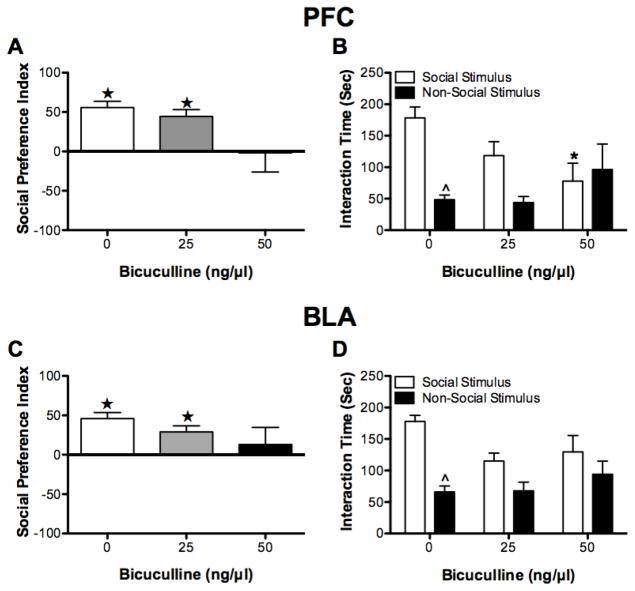Figure 5.
Social preference test. Intra-PFC infusions of BMI tended to decrease the social preference index (A). Moreover, following BMI (50 ng) the social preference index was not significantly greater than zero meaning that rats did not exhibit a preference for the social stimulus versus the non-social stimulus. B) Rats infused with vehicle (0 ng) or BMI (25 ng) spent more time exploring the social than the non-social stimulus, this was not true of rats infused with BMI (50 ng). Intra-BLA infusions of BMI did not affect the size of the social preference index but the social preference index of rats infused with BMI (50 ng) was not significantly greater than zero (C). D) Rats receiving intra-BLA vehicle infusions spent significantly more time exploring the social than the non-social stimulus; the same was not true for rats infused with BMI (25 ng or 50 ng). *P < 0.05, relative to 0 ng BMI. ★P < 0.05, relative to a social preference index of 0. ^P < 0.05, relative social stimulus.

